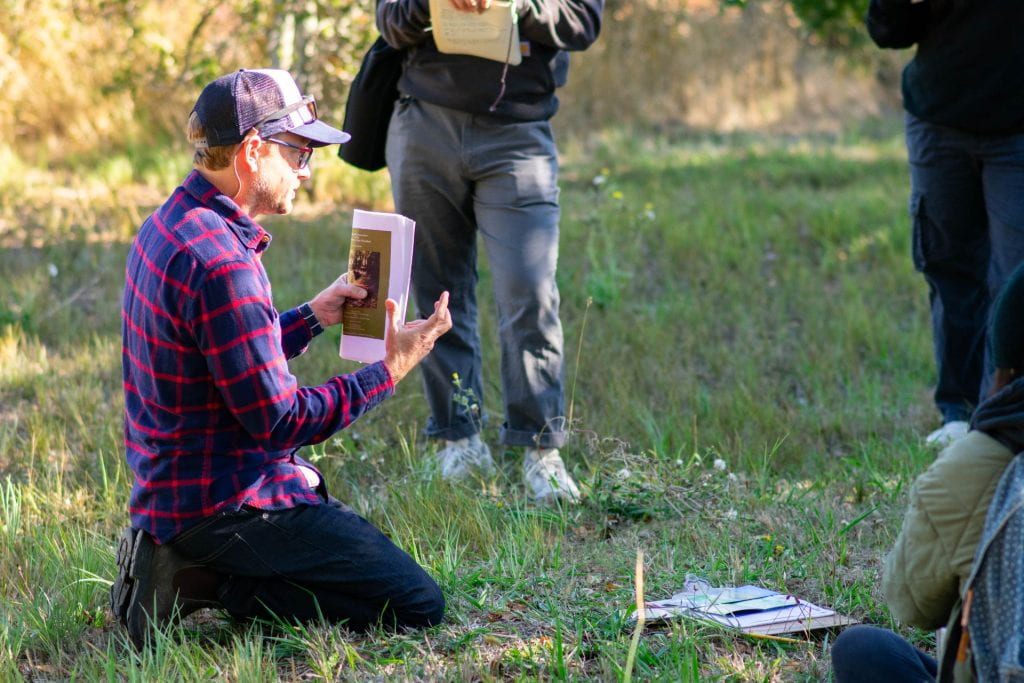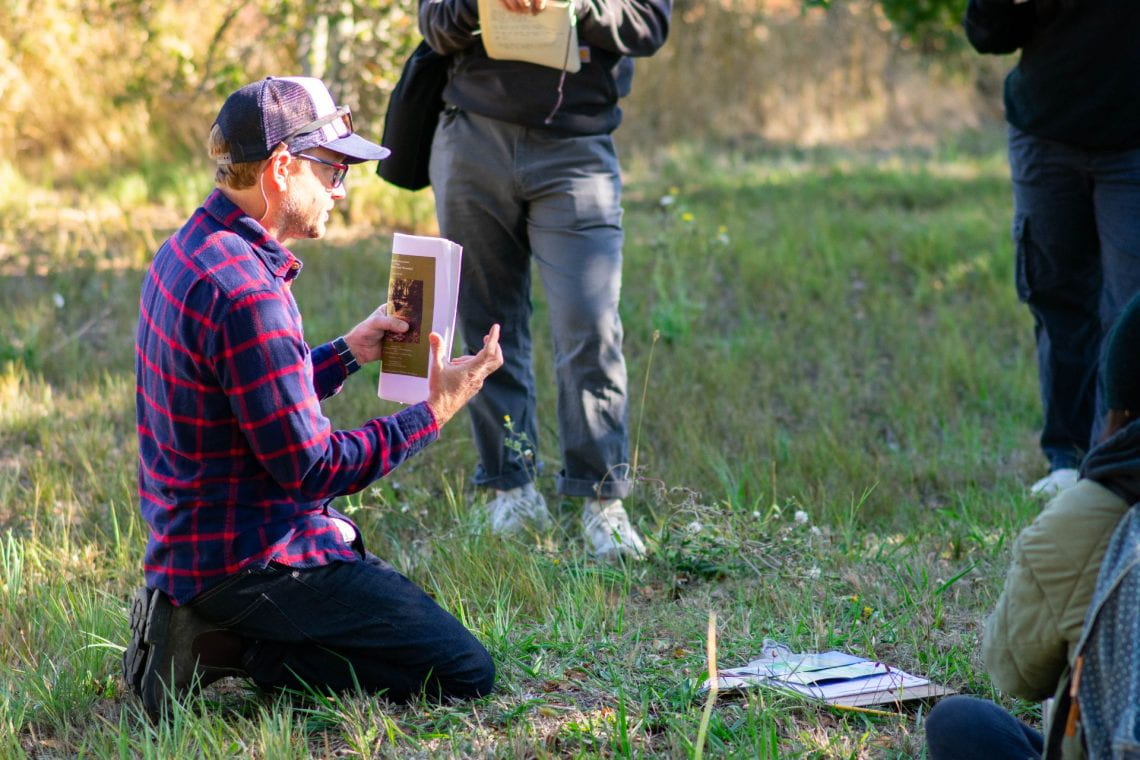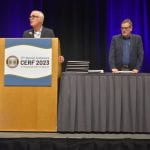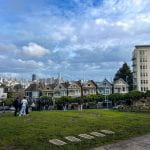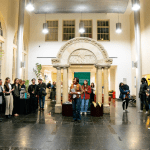 This past Fall the USF MSEM Watershed Management class went out into the field to get a first-hand look at watershed restoration management techniques as well as explore other water-related processes and functions in the natural world.
This past Fall the USF MSEM Watershed Management class went out into the field to get a first-hand look at watershed restoration management techniques as well as explore other water-related processes and functions in the natural world.
Dr. Gerhard Epke first led the class to the Corte Madera Creek Watershed located about 15 miles to the north of Hilltop campus within the eastern urbanized corridor of Marin County. The Corte Madera Creek Watershed extends from the foothills of Mount Tamalpais into the San Francisco Bay.
As the class unloaded from the field van at Hal Brown Park, they were met by the President of the Friends of Corte Madera Creek Watershed (FCMCW), Sandy Guldman. Sandy was in the middle of weeding invasive plant species around a patch of pickleweed just to the southeast of the Corte Madera Creek trail.
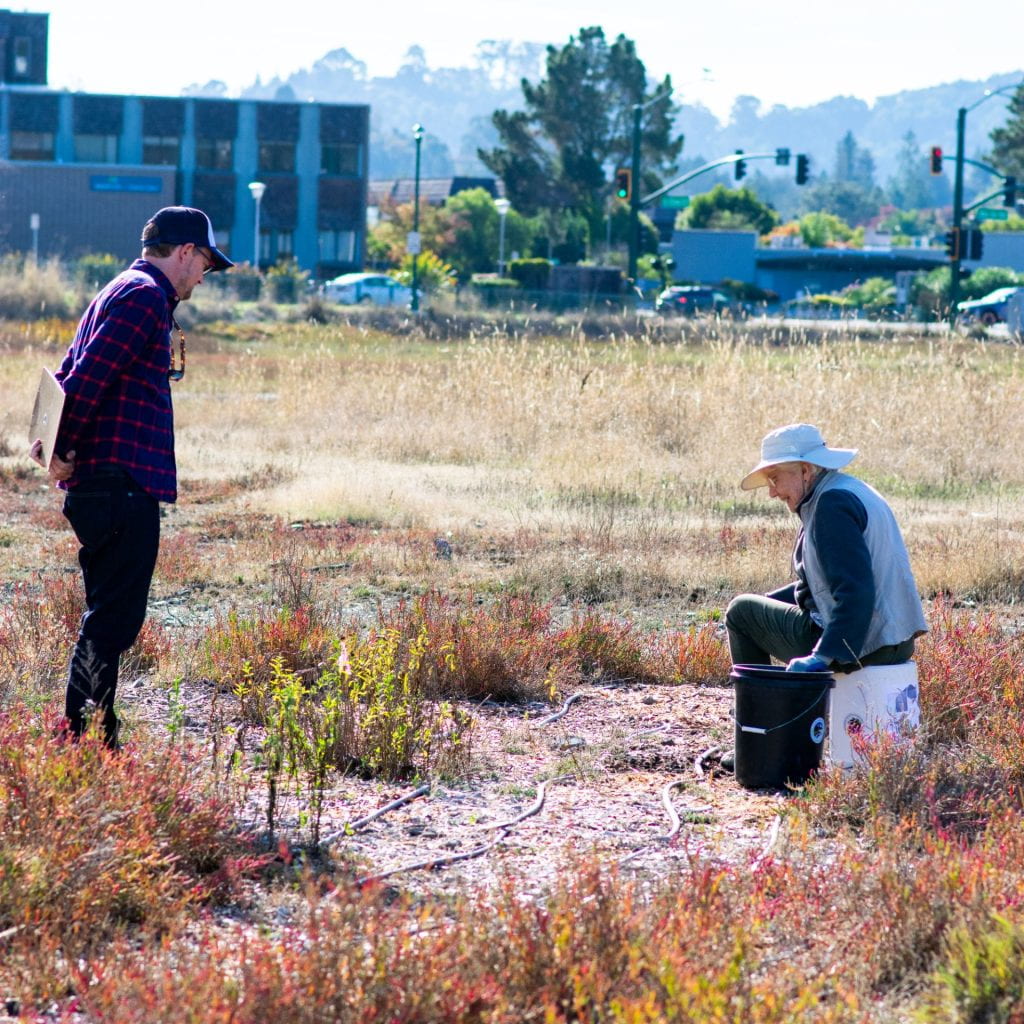
out amongst pickleweed patches along Corte Madera Creek.
Sandy described the restoration projects that the FCMCW worked on at the Creekside Marsh to improve the conditions of the southeastern part of the marsh. First they replaced an old decomposing culvert just upstream of the Bon Air Bridge which had interrupted tidal flow into the panhandle part of the marsh.
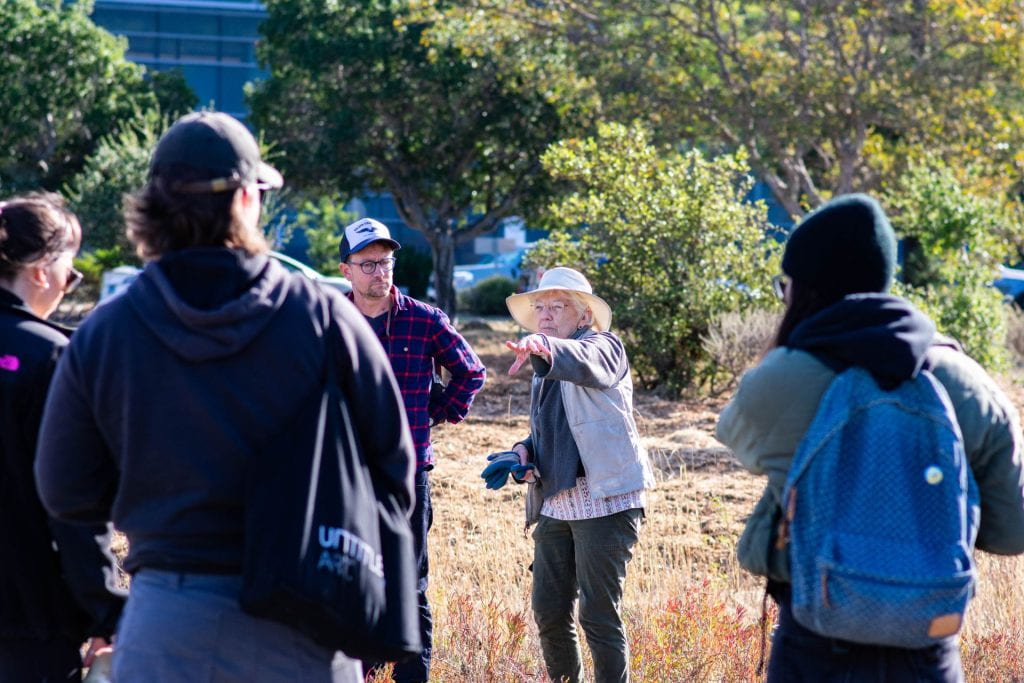
After the culvert project was completed, the group then worked on increasing the amount of marsh vegetation and improving soil conditions. The soil tests revealed there was poor porosity, high pH and salinity, and a significant amount of gravel in the barren areas of the site. A portion of the poor quality soil was excavated and replaced; since then, the area has shown significant improvement in native marsh vegetation coverage (including pickleweed, saltgrass and cordgrass).
![Friends of Corte Madera Creek Watershed Crew restoring vegetation along Corte Madera Creek [photo credit: Friends of Corte Madera Creek Watershed]](https://usfblogs.usfca.edu/msemenvs/files/2024/01/Screen-Shot-2024-01-19-at-3.26.04-PM-fc9ca369ac96ef39-1024x766.png)
![Ridgeway’s rail and hybrid spartina plant. [photo credit: Robert Clark/National Science Foundation]](https://usfblogs.usfca.edu/msemenvs/files/2024/01/Screen-Shot-2024-01-19-at-3.25.48-PM-31251d346e4908af-1024x678.png)
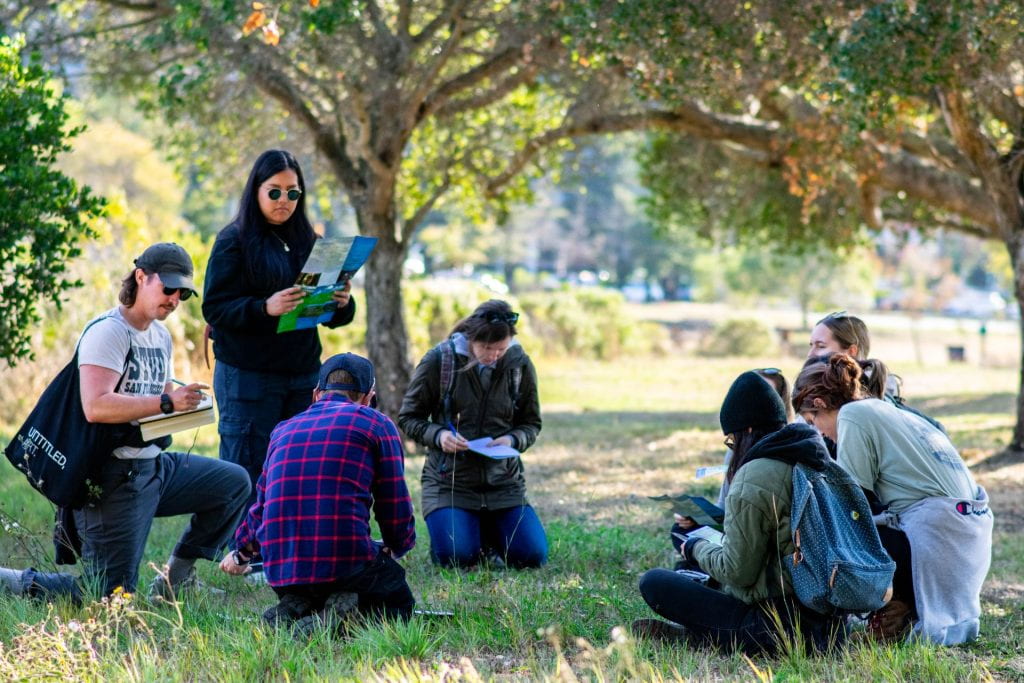
After bidding Sandy adieu, the class walked further west towards the creekside and Dr. Epke had everyone circle up under a grove of oak trees. He then gave a short lecture on the Corte Madera Creek’s watershed morphology before holding an open discussion for students to ask questions on restoration practices and ecosystem functions. The field trip was an incredible opportunity for students to be able to engage with the environmental systems in real time while learning about proper management strategies. We are grateful to Dr. Epke for sharing his expertise with us before starting his new role as Water Quality Program Manager at the Marin Resource Conservation District.
